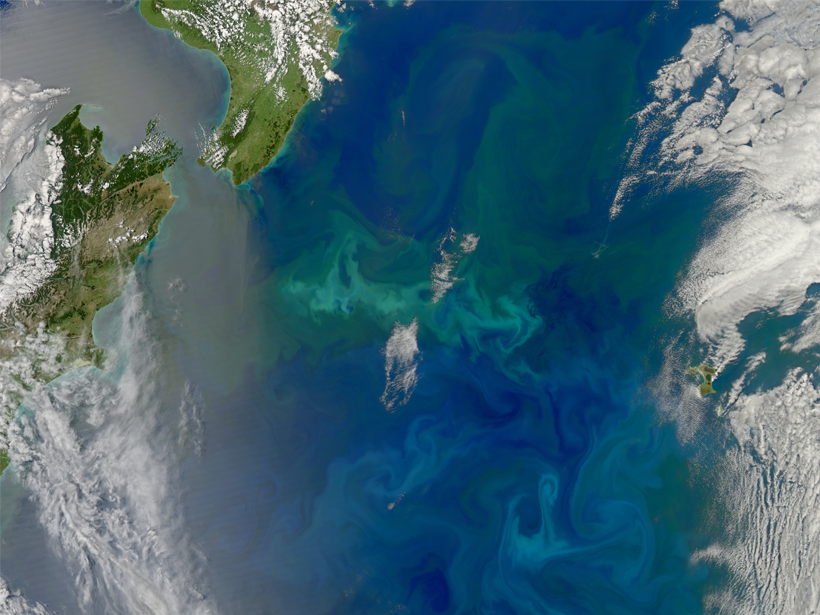Source: Paleoceanography and Paleoclimatology
During the middle to late Pliocene about 4.2 to 2.8 million years ago, most of Earth’s continental ice was located in the Southern Hemisphere. Fluctuations in temperature and the volume of ice present during this relatively warm period have largely been attributed to cyclic changes in the tilt of Earth’s axis that recur about every 41,000 years. To date, however, most of the records upon which this interpretation is based have come from the Northern Hemisphere.
Now Caballero-Gill et al. report new evidence from the southwestern Pacific Ocean that challenges this conventional wisdom. The team presents the first high-resolution paleoclimate reconstructions derived from two deep-ocean sediment cores, Ocean Drilling Program Site 1125 and Deep Sea Drilling Project Site 594, using multiple proxies to recreate variability in Southern Hemisphere climate and temperature during the middle to late Pliocene.
All variables that the authors measured, including intermediate water stable oxygen and carbon isotopic ratios as well as indicators of sea surface temperature and surface productivity, reveal a dominant, 100,000-year rhythm in climate fluctuations that overprints the expected 41,000-year cyclicity. Because this 100,000-year cadence is detected from middle to surface water depths at both sites, as well as in other southwestern Pacific locales, the researchers argue these middle to late Pliocene climate excursions likely extended across vast portions of the Southern Hemisphere.
Although the authors’ evidence is consistent with documented cycles in the angle of the planet’s axial tilt and regular variations in the shape of Earth’s orbit around the Sun, they shift our attention to a perhaps more important player. They attribute the rhythm observed in their data to recurring wobbles of the planet as it spins on its axis. The researchers argue that nonlinear feedbacks such as ice albedo and/or atmospheric carbon dioxide concentrations have rectified these typically 23,000-year cycles into the 100,000-year signals observed in the southwestern Pacific sediment records.
If confirmed, this study’s surprising conclusion that glaciations in the middle to late Pliocene occurred at 100,000-year intervals may indicate that the Pliocene-Pleistocene paleoceanographic type section, the LR04 global stack, does not accurately represent orbital variability during this interval. The authors argue that an assumption of 41,000-year pacing in previous studies may have obscured observations of other cycles that have the potential to offer novel insights into how Earth’s climate system operated at a time when the planet was warmer than it is today. (Paleoceanography and Paleoclimatology, https://doi.org/10.1029/2018PA003496, 2019)
—Terri Cook, Freelance Writer
Citation:
Cook, T. (2019), Southern Hemisphere sediments show surprising Pliocene cyclicity, Eos, 100, https://doi.org/10.1029/2019EO122085. Published on 25 April 2019.
Text © 2019. The authors. CC BY-NC-ND 3.0
Except where otherwise noted, images are subject to copyright. Any reuse without express permission from the copyright owner is prohibited.

